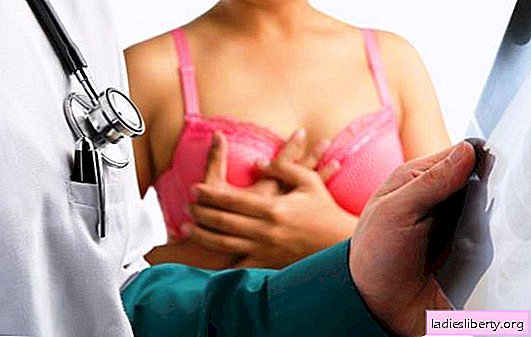
When a person says that he dislocated, for example, a leg, this does not mean that he really got a real dislocation, since dislocation is often referred to as joint damage in ordinary speech, consisting in a sprain, tear, or complete rupture of the joint ligaments, but without any real clinical dislocation. Such damage is denoted by the term stretching - distortion.
Causes of distortion
The origin of joint sprains is almost always associated with a fall. For example, a person at the time of a fall, in order not to hit his head, stretches out his hands and, first of all, rests on one or another hand or both together. Thus, the hands take the entire initial blow on themselves and, of course, are subjected to violence and stretching in one or another joint.
If a person hits the palm of the hand, then the hand forcibly extends in the wrist joint, and this extension can easily go beyond normal. Well, in order for the arm to bend above the norm, it is necessary to stretch, tear or tear the ligaments on the opposite, i.e. the flexion side of the joint. So there is distortion of the wrist joint.
It goes without saying that if a person hits the rear of the hand, then there will be a violent bending of the arm in the wrist joint beyond the limits of the possible. As a result of this, again, a joint extension occurs, but only with a tear or tear of the ligaments on the extensor side. Likewise, when striking the inner or outer edge of the hand, it will be forcibly bent to one side or the other with a tear of the ligaments on the side of the wrist joint, which will also entail distortion.
Like the wrist joint, distortions and all other joints can undergo, and in blocky joints that allow only two movements - flexion and extension, the distortion is most often caused by lateral movements unusual for them, i.e., violent bending of the part to the side.
In this case, the lateral ligaments are torn or completely torn, with the purpose of preventing the lateral movements of the joints. Thus, stretching occurs in the finger joints, as well as in the elbow and knee. But the increased flexion or extension of these joints beyond the limits of normal mobility in the same way can lead to distortion.
On the lower extremities, stretching can easily occur without a person falling, when he only trips. Of all the distortions, the most common is distortion of the ankle joint, which almost always occurs when a person stumbles, for example, having suddenly hit a hole in his foot. Or instead of the sole, he will be on the outer edge of the foot - then, under the pressure of the body’s gravity, the foot is tucked even more and can turn the sole up and the back down.
At the same time, the outer ankle does not meet support underneath and, remaining on weight, rushes down, which is why the ligaments connecting the ankle to the foot are torn or torn. If by chance a leg turns up so that a person has to step on the inner edge of the foot and the sole turns outwards, then you get the same distortion as in the previous case: only a break or tear of the ligaments will be near the inner ankle. Distortions on the ankle joint occurring from violent flexion or extension of the foot are much less common.
Signs of distortion
Signs of distortion vary depending on the degree of tissue damage. With a weak form of distortion, limited only by tearing the ligaments, all painful phenomena can be reduced to pain and slight swelling. The latter comes from a bruising, which is found blue under the skin, if the position of the stretched and torn ligaments is superficial.
For example, after a person stumbles and his foot turns up, pain appears in the ankle joint and a slight bruising near one or another ankle. The pain is, as a rule, not so strong as to interfere with walking. In more serious cases, the pain is so strong that the patient cannot move his arm or leg in a damaged joint
Bruising is seen not only on the side that underwent a sprain, but also on the other side that was squeezed during the sprain; here they often extend far above and below the extended joint. In this case, sometimes bruises are not detected blue integument immediately, but after some time, even a few days. It depends on the fact that the blood poured into the depths only subsequently spreads to the subcutaneous tissue and becomes visible through the skin.
In the most severe cases of distortion, hemorrhage occurs in the joint (haemarthrosis), and even abnormal mobility in it, consisting in the appearance of such passive movements that are not characteristic of a healthy joint. For example, with knee distortion, lateral joint mobility may occur due to rupture of one or the other lateral ligament.
Finally, there are cases where a fracture of a bone occurs during distortion, for example, with ankle sprains, a fracture of one or another ankle quite often occurs: this happens because the ligaments withstand violence and do not break, but tear off a piece of bone to which they are attached.
Forecast in case of distortion
As for the prognosis, distortions with proper treatment usually end happily. Often, already on the 3rd day, all painful phenomena disappear if there was a weak form of stretching and if the patient at that time maintained a calm position of the stretched joint. The harder the distortion, the more time is required to cure it.
With significant tears of the ligaments and large bruises, it takes 2-3 weeks, and sometimes a whole month, to stay in bed and walk on crutches with distortion on the leg or keep your hand on the band or even on the splint when stretching your arms. In those cases, when it is accompanied by hemorrhage in the joint, complete rupture of the ligaments and, especially, bone fracture, recovery is delayed for a longer period and can only follow after a month, one and a half and even two months.
Sometimes and after that, in severe cases, the stiffness of the joint remains, which prevents free movements in it. In other, milder cases, it happens that there remains a tendency in the damaged joint to a repetition of distortion; for example, after it, the leg easily folds back. This can occur from lengthening and weakness of the joint during the first distortion of the ligaments. Finally, there are far from rare cases where, after distortion, improperly treated, inflammation develops in it.
Distortion Treatment
Treatment of small dystorias is not difficult. One rest in the form of abstinence from walking or hand movements is enough to completely cure the disease in a few days. Unless it is necessary to add to this in the first days two use of cold lotions and ointments. And with more significant sprains, the limb is laid in the tire and an ice bubble is kept on top of the damaged area for the first three days. After this time, usually the ice is canceled and the massage begins once or twice a day.
Massage accelerates the course of the disease, contributing to the absorption of bruising. It benefits in the very first time after damage. About a week after the damage, you can do gymnastics along with massage, making passive movements in the diseased joint with your hands. All this contributes to the absorption of bruising and the restoration of normal mobility in the damaged part.
In severe cases of distortion, accompanied by deep ruptures of the ligaments together with hemorrhage in the joint cavity and especially bone fractures, it is necessary to ensure complete immobility of the joint by applying a plaster or other fixed bandage, on top of which, again, an ice pack should be placed.
But do not abuse peace and leave a stationary bandage on a damaged limb for a long time. It is enough to keep a leg or arm in a bandage in such cases for one week and not longer than two weeks. The abuse of peace, i.e., the continued holding of the damaged part in a fixed bandage, leads to joint stiffness and rigidity of the surrounding parts, which remain for a long time and interfere with movements.
The treatment of inflammation of the joint that develops after distortion consists in the use of various anti-inflammatory drugs, mainly ointments.











